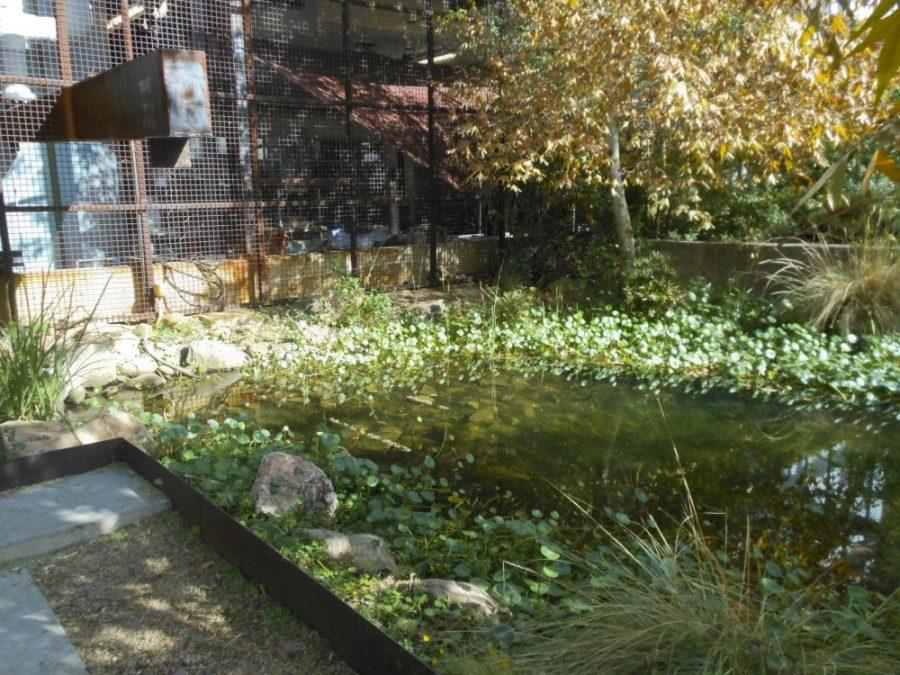While the UA has a number of large-scale sustainability projects in the works, it also employs a number of smaller, day-to-day efforts to keep the campus green.
A major facet of sustainability that the UA focuses on is harnessing the torrential rains of the monsoon season, which often cause heavy flooding.
A number of buildings on campus have large water storage tanks that hold water collected from rooftop gutters. Two cisterns at the UA Visitor Center hold 1,000 gallons each; a tank at the College of Architecture, Planning, and Landscape Architecture holds 20,000 gallons.
Under the area formerly known as Bear Down Field, where the North End Zone Expansion is currently taking place, rainwater storage tanks have been installed with a total capacity of millions of gallons of water.
This water is used for various purposes. At the UA Visitor Center, some is used to water a lemon tree growing in the front of the building. At CAPLA, the tank slowly feeds water to a pond that is part of a simulated desert wetland habitat.
Features that would usually not merit a second glance also help with flooding. Landscaping composed of a large number of rocks, such as in front of the Harvill building, diverts rainwater to keep it from reaching the street, which helps reduce flooding.
Wendi Rountree, the senior program coordinator at the UA Visitor Center, emphasized how the UA has valued sustainability for many years.
Old Main, which was built years before air conditioning or evaporative cooling, was built slightly sunk into the ground, and the large porches around the building keep heat off the windows. The trees and other vegetation surrounding Old Main, most of them native, shade the structure.
“The UA focuses on repurposing buildings, instead of rebuilding them,” she said.
For example, the Arizona State Museum was originally the library, before it was converted to its current use.
Rountree also stressed the importance of pollution reduction on campus, which can be accomplished by using mass transit and other alternatives to driving such as ridesharing, the pedestrian underpasses, bike share and CatTran.
Even though Tucson is a desert city, the UA is remarkably green, literally. There are 7,000 trees on campus, including varieties from around the world. In addition, the UA has the largest green space in the state of Arizona.
These trees are more than just decoration, as they help reduce the need for air conditioning, Rountree said. Besides Old Main, there are many buildings on campus that have classrooms underground.
Rountree added that ideally, the Sun Link Tucson Modern Streetcar will reduce the number of cars that drive to campus, ultimately reducing the community’s carbon footprint even more.








